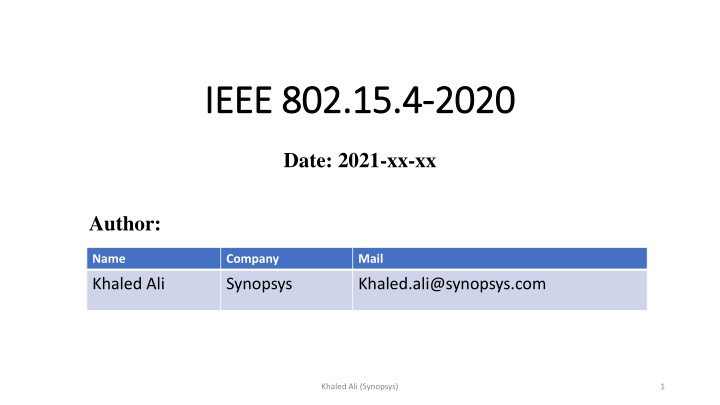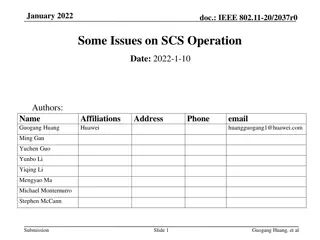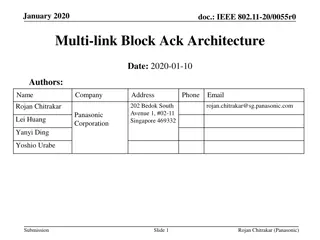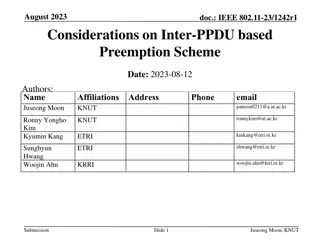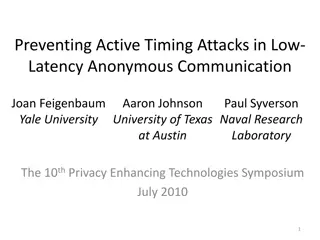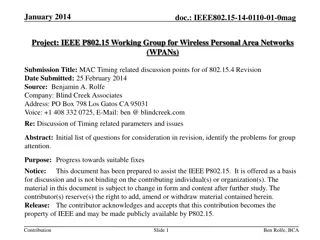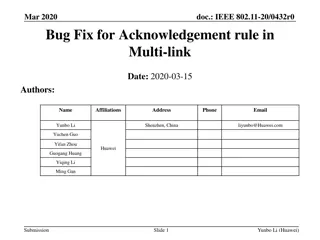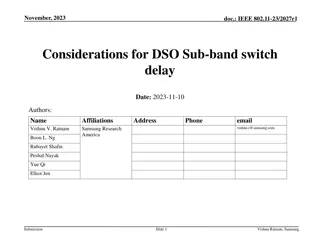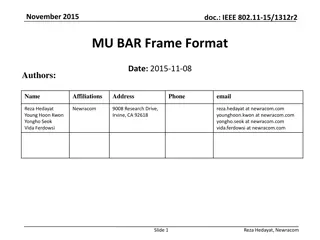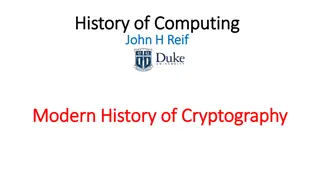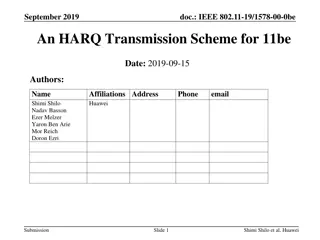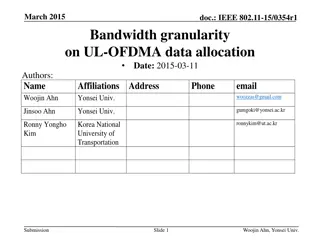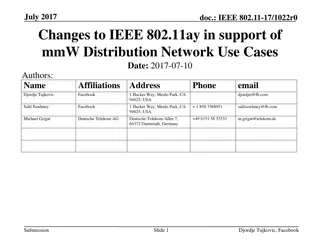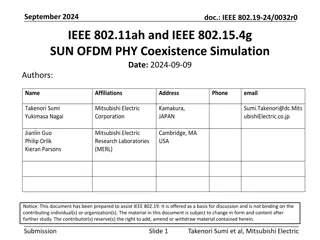Enhanced Ack Timing Issues in IEEE 802.15.4-2020 Standard
This document discusses the issues related to Enhanced Ack timing in the latest version of the IEEE 802.15.4 standard. It addresses the processing requirements for Enhanced Ack frames and highlights discrepancies in timing specifications. The analysis sheds light on the challenges and potential improvements needed in the standard's implementation.
Download Presentation

Please find below an Image/Link to download the presentation.
The content on the website is provided AS IS for your information and personal use only. It may not be sold, licensed, or shared on other websites without obtaining consent from the author.If you encounter any issues during the download, it is possible that the publisher has removed the file from their server.
You are allowed to download the files provided on this website for personal or commercial use, subject to the condition that they are used lawfully. All files are the property of their respective owners.
The content on the website is provided AS IS for your information and personal use only. It may not be sold, licensed, or shared on other websites without obtaining consent from the author.
E N D
Presentation Transcript
IEEE 802.15.4 IEEE 802.15.4- -2020 2020 Date: 2021-xx-xx Author: Name Company Mail Khaled Ali Synopsys Khaled.ali@synopsys.com Khaled Ali (Synopsys) 1
Abstract This document contains some issues related to Enhanced Ack timing relative to in latest standard version. Khaled Ali (Synopsys) 2
Contents Enhanced Ack usage Problem Definition Enhanced Ack timing issue in standard Khaled Ali (Synopsys) 3
Enhanced Ack usage The invention of Enhanced Ack and its related features which is now playing a main role in MAC 802.15.4 based networks features for example Thread network (version 1.2) features : 1. CSL (Coordinated sampled listening) 2. Link metrics using Enhanced Ack Probing Same for Zigbee R23 released by Zigbee alliance in some drafts that uses CSL. However, in 802.15.4-2020 standard Enhanced ack has some missing and confusing points. Khaled Ali (Synopsys) 4
Problem Definition In version 2015 and 2020 of the standard mentioned in section 6.2.4 IFS. stated that "The MAC sublayer needs a finite amount of time to process data received by the PHY. To allow for .... separated by at least an IFS period" The processing needed must be done in IFS and for Ack it must be done less than the AIFS which is bounded by the inequality mentioned at the same section: AIFS SIFS LIFS So, processing for ack frame shall be done with in maximum ~ 192usec for Phys like OQPSK or 204usec including drift in symbol rate. This value is defined from earliest versions of the standard for immediate ack. Which has no content, can t not be secured, doesn t carry addressing. In contrast, In case of Enhanced ack which is more like ordinary data frame that may carry IEs (like CSL IE), may contain complete mac header, may be secured. It is expected that the processing time for Enhanced ack handling shall be extended to be greater than the 192usec (immediate ack). Khaled Ali (Synopsys) 5
Enhanced Ack timing issue in standard In section 6.2.4 IFS: The paragraph mentioned doesn t differentiate between the two types of ack. However, the figure attached to the same section is changed from version 2011 to 2015 by changing Ack -> Imm-Ack. Again!! There is no such a paragraph or a single line that state there is an extra time added to AIFS in case of Enhanced ack. However, in different places in standard mentioned that Enhanced ack requires more processing. Khaled Ali (Synopsys) 6
